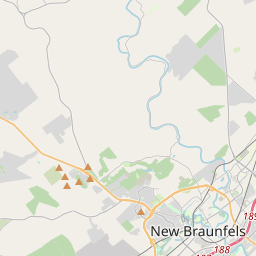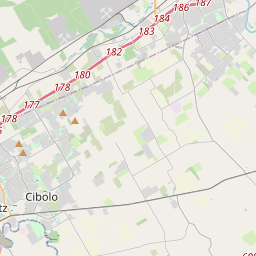West End Park and Dance Hall
Historical marker location:












Following his service in World War II, Felipe Delgado and his wife, Elisa Saenz Delgado, purchased a lot in 1947 in the West End Subdivision #2, determined to create an entertainment center for the Hispanic community. Felipe worked various jobs including civil service but devoted his spare time to working on the park. A concrete slab was poured for dances and events lit by lanterns and later a hall was built. The hall became a popular destination for concerts, weddings, anniversaries, birthdays and quinceañeras. Lydia Mendoza, one of the best-known Spanish-language singers of the Texas-Mexico border region, performed at the West End Dance Hall to large crowds. At times, the concrete platform and the dance hall were converted for use as a skating rink or for boxing matches. Elisa made and sold hamburgers for attendees at dances and baseball games.
A large outdoor area accommodated carnivals, picnics and celebrations, and a baseball field with a large grandstand encouraged the love of baseball in the New Braunfels Hispanic community. The West End team was called the Cardinals and later the Lions and played against other New Braunfels and surrounding city teams at the park, as well as teams from Mexico. One of the largest annual events in the park was Diez y Seis de Septiembre, a celebration of Mexico’s independence from Spain in 1810 that is observed throughout Texas. Hundreds of citizens and guests would gather in the park for music, food and festivities. The Delgados leased the property in the 1970s and the hall was torn down in the 1980s. Although the hall, cantina and baseball fields are no longer visible, the legacy of the West End Park remains in the community.
(2016)
As one of the most visible programs of the Texas Historical Commission (THC), historical markers commemorate diverse topics in Texas history, including: the history and architecture of houses, commercial and public buildings, religious congregations, and military sites; events that changed the course of local and state history; and individuals who have made lasting contributions to the state, community organizations, and businesses.
The city of Austin, the state capital, is known as the live music capital of the world. It is home to many music festivals, including South by Southwest (SXSW) and the Austin City Limits Music Festival.
In the early 19th century, German immigrants began to arrive, attracted by the fertile land and opportunities for a better life. These settlers established small farming communities and brought with them their language, traditions, and expertise in agriculture and craftsmanship. The town of New Braunfels was founded in 1845 by Prince Carl of Solms-Braunfels, becoming the first German colony in Texas.
The mid-19th century saw significant growth and development in Comal County, with the construction of schools, churches, and businesses. The area became known for its thriving agricultural industry, with farmers cultivating crops such as cotton and corn. The arrival of the railroad in the late 19th century further spurred economic growth and provided easier access to markets.
Throughout the 20th century, Comal County continued to evolve and adapt to changing times. The county's strong German heritage remained at the forefront, celebrated through events like Wurstfest, a German sausage festival. The tourism industry also grew, with visitors flocking to the county's natural attractions, such as the iconic Guadalupe River and historic Gruene Hall, Texas' oldest continually operating dance hall.
Today, Comal County is a vibrant and thriving community, blending its rich history with modern amenities and a strong sense of pride in its cultural heritage. With its beautiful landscapes, strong economy, and warm Southern hospitality, Comal County continues to be a desirable place to live and visit.
Comal County Timeline
This timeline provides a glimpse into the major events and milestones that have shaped the history of Comal County, Texas.
- 1846 - Comal County established as one of the original 23 counties in the state of Texas
- 1847 - Settlement begins in the area with the founding of New Braunfels
- 1850 - Comal County's population reaches 2,013
- 1861-1865 - County residents actively involved in the American Civil War
- 1870 - Completion of the first railroad through Comal County
- 1885 - Jacob's Well, a natural artesian spring, becomes a popular tourist attraction
- 1920s - Economic growth in Comal County, driven by agriculture and manufacturing industries
- 1941-1945 - County residents contribute to the war effort during World War II
- 1968 - Canyon Lake, a reservoir on the Guadalupe River, is completed
- 1990s - Rapid population growth and urban development in Comal County
- 2007 - Construction begins on the controversial Trans-Texas Corridor project